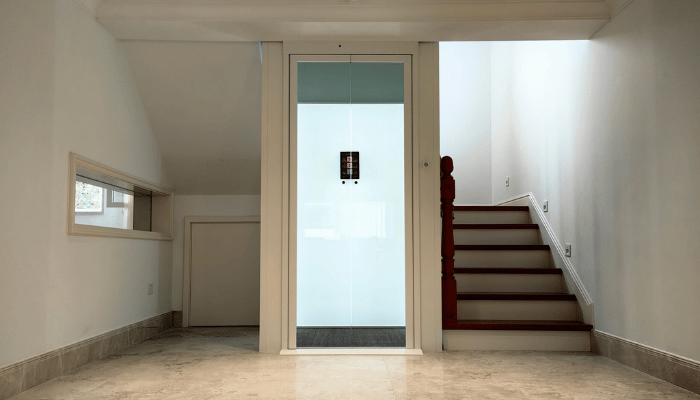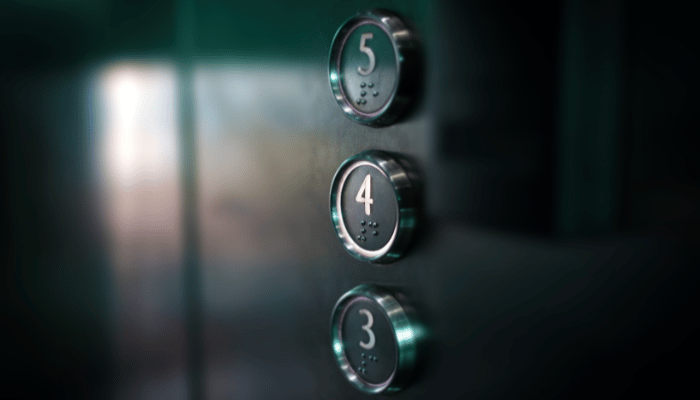
Elevators have evolved over the years and are now more efficient, safer, and more convenient to use than before. The Machine Room Less (MRL) elevator is one of the most modern. This new design is smaller and neater and can easily be used in numerous structures. In this blog, we will define a machine room less elevator, discuss its advantages, and how to incorporate and maintain them.
Overview of MRL Elevators
MRL elevators do not require a machine room as small equipment is used with all parts fitting into the elevator shaft. This design is more versatile for floor arrangements and requires less space for the elevator system. MRL elevators generally incorporate a gearless motor and a counterweight for the operation of the elevator car.
Importance and Benefits of MRL Elevators
MRL elevators are recognized because they offer many benefits. They save space, which is excellent for buildings with limited room. They are also energy-efficient and can save money on both installation and maintenance. Additionally, the elevator design offers flexibility, helping architects and builders optimize building layouts without compromising on the elevator system.
How Do MRL Elevators Work?
Basic Operating Principle
It works like a traditional traction elevator without needing a machine room and is known as an MRL elevator. This consists of a motor, drive system, controller, and safety devices, forming a complete system within the elevator shaft.
Motor and Drive System
The motor and drive system are key parts of an MRL elevator. Most use gearless traction motors, which are compact and energy-efficient. These motors are usually placed within the shaft, at the extreme top of the car, or on its side. It comprises pulleys and ropes or belts that help pull the elevator car and the counterweight through connection to the motor.
Control System
The control system manages the elevator’s operations, including speed, direction, and stopping points. Modern MRL elevators use advanced microprocessor-based controllers for precise control. These systems optimize energy use and improve ride quality by adjusting speed based on the load and travel distance.
Safety Features
Safety is crucial in elevator design, and MRL elevators include several safety features to protect passengers. Common safety mechanisms include:
- Emergency Brakes: Activated during a malfunction to prevent the elevator from falling.
- Overspeed Governors: Monitor speed and engage emergency brakes if they exceed safe limits.
- Door Interlocks: Ensure the elevator only moves if the doors are fully closed and locked.
- Backup Power Systems: Allow safe operation during power outages.

Advantages of MRL Elevators
Space Efficiency
MRL elevators are very space-effective since the electric machine is in the vertical hoistway shaft. This particularly applies to clients with small space on their premises, such as residential apartments, hotels, and other business premises.
Energy Efficiency
Compact home lifts under MRL consume less energy than standard elevators. The gearless traction motors help conserve energy; the new control systems also help to manage power usage more effectively, minimizing energy costs and the Firm’s effect on the environment.
Cost Savings
MRL elevators save money in both installation and maintenance. Their compact design makes installation simpler and less expensive. Additionally, the advanced technology used in MRL elevators often means lower maintenance costs over their lifespan.
Design Flexibility
MRL elevators give architects and builders more design flexibility. Building layouts can be optimized without needing a machine room to maximize usable space and improve aesthetics. This flexibility makes MRL elevators popular for modern buildings where design and functionality are essential.

Installation and Maintenance
Installation Process
Installing an MRL elevator involves several steps:
- The elevator shaft is built according to the specific lift dimension and requirements of the MRL system.
- The motor and drive system are installed inside the shaft, followed by the control system and safety features.
- The elevator car and counterweight are fitted, and the system is tested for proper operation.
Installation time is shorter than usual to install conventional elevators due to the fewer complicated characteristics and limited space needed. However, it is safe to follow professional recommendations in the elevating industry when installing elevators.
Maintenance Requirements
Elevator maintenance goes a long way in helping to check on aspects that may hinder the efficient running of the elevator. Routine MRL elevator maintenance involves:
- Checking of parts of the mechanical nature.
- Examining the safety features.
- Calibrating the software used in controlling the lifts.
MRL elevators use sophisticated techniques, so it is advisable to have maintenance conducted by skilled personnel in this area. These small maintenance tasks should be done bi-annually, with more frequent checks for elevators in demand. Building owners should also attend to all matters concerning the building to avoid time wastage and unnecessary loss of time from passengers.
SWIFT Lifts Creating Engineering Solutions to Sustain Global Mobility
Whether you need to optimize space in a residential building or seek an energy-efficient solution for a commercial property, Swift Lifts has the expertise and products to meet your needs. Our MRL elevators combine advanced technology with exceptional design to deliver outstanding performance and efficiency.
Discover the benefits of MRL elevators and transform your building with Swift Lifts. Contact us today to learn more about our products and services and find the ideal elevator solution for your project.
FAQs
MRL elevators do not require a separate machine room, as all the machinery is housed within the elevator shaft. This design saves space and often improves energy efficiency compared to traditional elevators that need a dedicated machine room.
MRL elevators are ideal for many building types, including residential, commercial, and small to mid-sized structures. However, high-rise buildings or those with specific design constraints might still require traditional elevator systems.
MRL elevators typically use gearless traction motors and advanced control systems, which are more energy-efficient than traditional systems. This reduces overall power consumption, lowering energy bills and a smaller environmental footprint.
MRL elevators should be maintained at least twice a year. High-traffic elevators need more frequent inspections to ensure optimal performance and safety.
MRL elevators include emergency brakes, overspeed governors, door interlocks, and backup power systems. These features ensure safe operation, prevent accidents, and allow emergency use during power outages.
Get in Touch!










